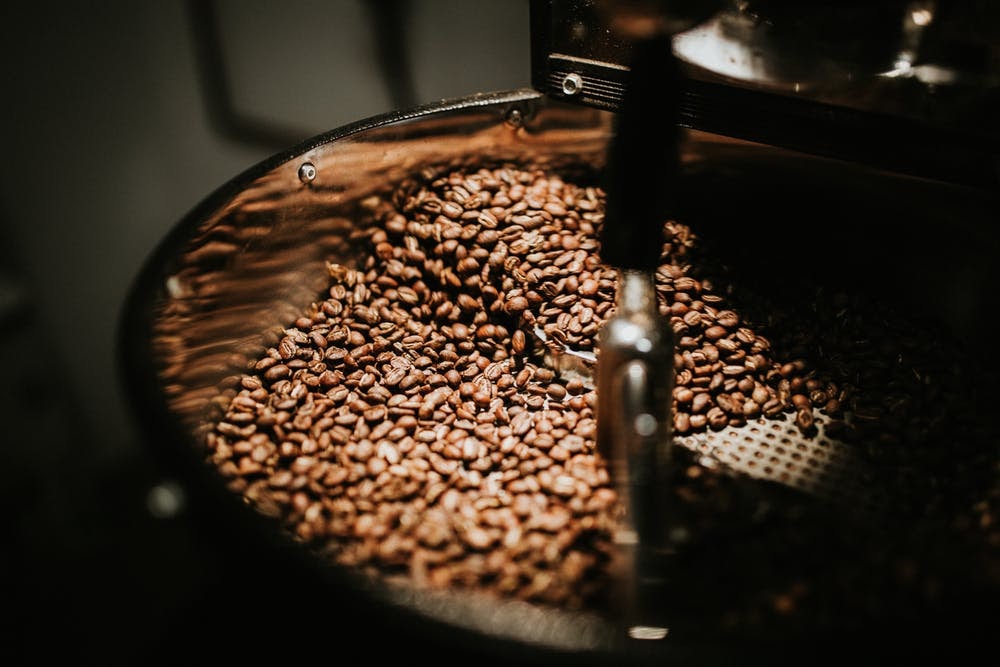
Coffee Roasting: How science and art come together to create the aromatic brown bean
Most of us cannot imagine starting our days without a good cup of freshly brewed coffee. But not many of us pay much attention to all that which goes into bringing that fresh brew to your cup. From planting to brewing – coffee production is a complicated but artful process. For ease of understanding, let’s divide the production process into Pre-Roasting, Roasting and Post-Roasting. While the other two stages are as essential to creating the final product, it is the coffee Roasting stage that is my absolute favourite.
Pre-Roasting: Harvesting, processing & milling
The coffee plant, once ready for harvest, bears bright red fruits known as the coffee cherries. While there are mechanized processes developed for relatively flat plantations, in most coffee-producing countries, the coffee cherries are picked by hand via a labour-intensive process. The harvested crop is processed either by drying out the cherries naturally or drying machine. An alternative wet method starts by separating the cherry pulp from the bean and passing the beans through water channels and fermentation tanks.
The processed cherries are sent to the mill where the hulling machine removes the dried layers of the fruit, revealing the green coffee bean that is then graded and sorted based on colour, size and weight. The beans processed via the wet method need to be dried before they can be sent to the mill for sorting.
The green coffee beans are now ready for the all-important roasting stage.
Roasting: Drying, browning & flavour development
For the uninitiated, roasting is the process that turns the green coffee beans into the all familiar aromatic brown beans that we’ve all come to know and love. This transformation takes place inside a roasting machine and this is exactly where the flavour profile of the bean is developed. The best part about roasting, however, is the fact that while based on principles of standard science, the process in itself is quite an art!
The roasting cycle starts with the drying phase, goes on to the browning phase and ends with the flavour development phase. The beans are churned in the roaster drum continuously throughout the cycle in order to prevent burning. The first 3 to 8 minutes of the cycle is aimed at drying the beans by cutting down the humidity. The temperature at this point is around the 150-160°C mark. As it continues to dry out, the cycle progressed to the browning stage. One can notice the beans changing their colour gradually, as the roast tends to slow down naturally.
With the heat increasing, the aroma compounds start breaking out and as the beans keep getting a shade darker, the aroma keeps getting stronger. Most roasters maintain a temperature of about 288°C through the cycle, while the internal temperature of the beans keeps increasing which eventually causes the coffee to crack and begin the development phase.
Right from the beginning of the roasting cycle, as the beans continue to churn they continue to collect the heat and their internal temperature keeps increasing until the point of exploding – quite literally. This is the crucial time when the roast master needs to step in and control the flavour profile they want to create.
The flavour profile is dictated by the roast degree which in turn is measured by the colour of the beans. Light roast, medium roast and dark roast are the common roast degrees that you may come across when purchasing beans or even fresh brews from your local café. As far as the flavour profile is concerned, light roasts are typically more acidic, and fruity whereas dark roasts tend to be bitter, with a burnt edge to it.
Besides the roast degree, the roast time also has an impact on the flavour profile of the bean. Slow roasts allow organic acids more time to break down, hence reducing the acidity while fast roasts are known to enhance the number of aromatic compounds.
Post-Roasting: Cooling, grinding & brewing
At the end of the roasting cycle, the beans need to be cooled immediately and packaged for distribution. Freshly roasted beans are required to reach consumers instantly for optimal flavour, and hence most of the roasting is performed in the importing countries rather than the country where the cherries were produced.
Next in the post-roasting stage of coffee production is grinding. How fine does one grind the beans depend on the brewing technique one is planning to use. Fine grind is perfect for espresso, whereas a medium grind will work for drip coffee makers and coarse grind is preferred for French presses.
As for mastering the brewing technique? We’ve got that covered for you at the Victoria House



